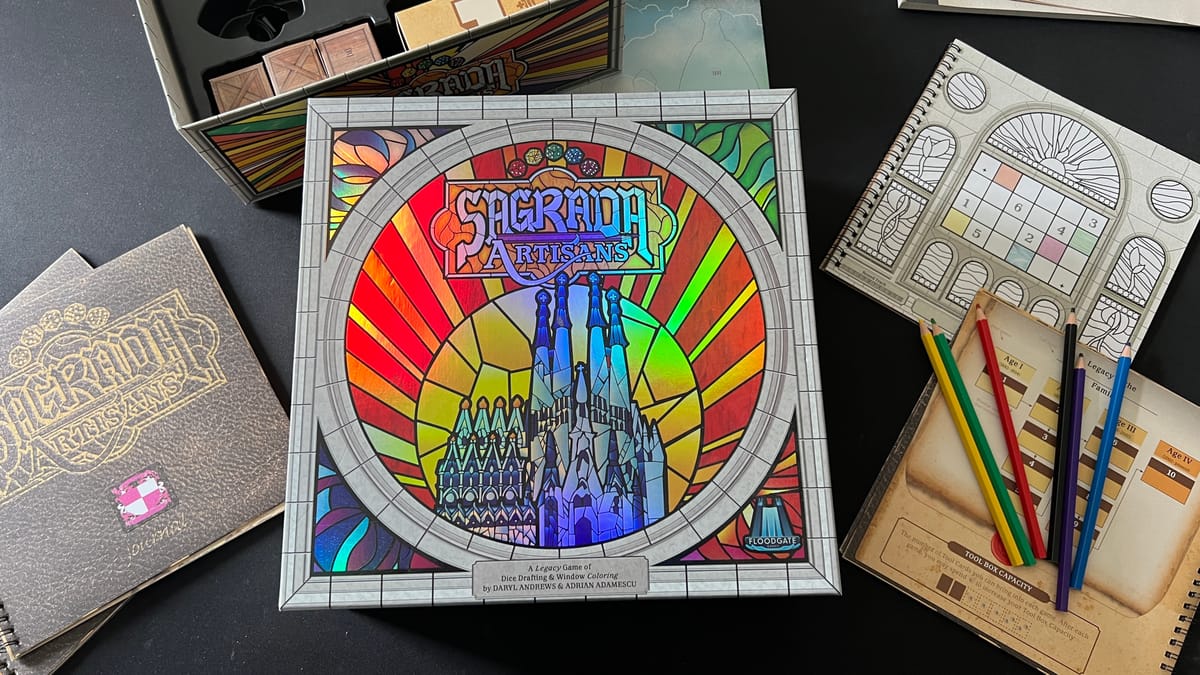
The Sagrada Familia in Barcelona needs new stained glass windows to adorn the walls of the magnificent structure. Architect Antoni Gaudi is commissioning artisan glass workers to help complete these windows. Will your family go down in history as the greatest glass workers in history?
Sagrada Artisans is the legacy campaign version of the popular abstract dice drafting game, Sagrada, from designers Adrian Adamescu and Daryl Andrews and publishers Floodgate Games. In Sagrada, players draft colored dice and place them on frames to complete variable scoring goals over a series of rounds. Players can use tools to help them navigate placement restrictions and create the overall winning window. In Sagrada: Artisans, players will compete with each other over a series of 10 windows and three generations of window-making families.
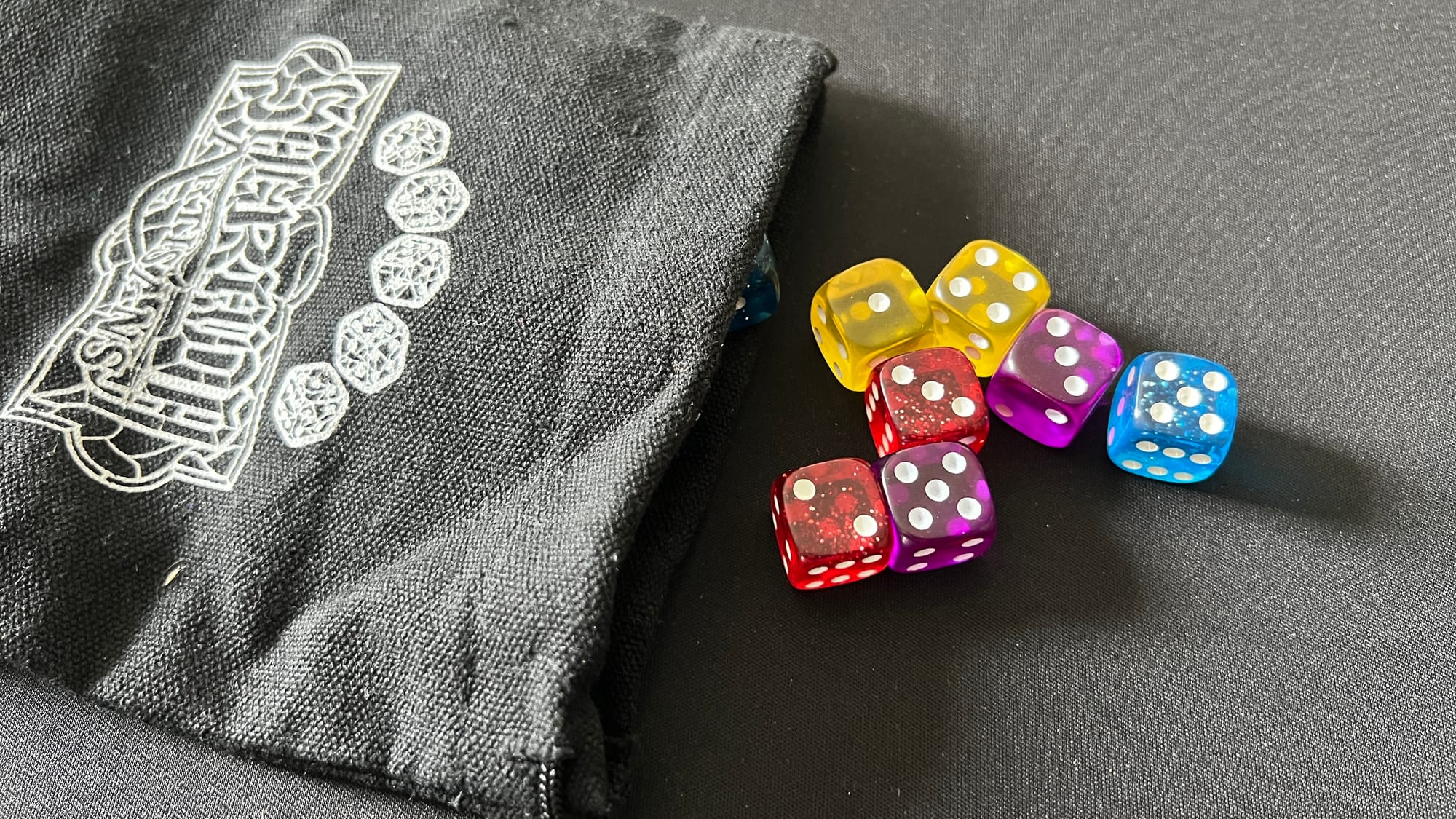
When players open the box, they are given colored pencils, a bag to hold the two dice of each color, and player books for up to four players. Each player will personalize their books throughout the campaign by naming their family, recording their windows, and storing components received along the journey. Also included in the box are several lettered envelopes, only opened when instructed, and three tuck boxes to house the story cards, tools cards, and any other cards removed from the game. A few other mysteriously lettered boxes are also included, along with a packet of window maps to be used after completion of the campaign.
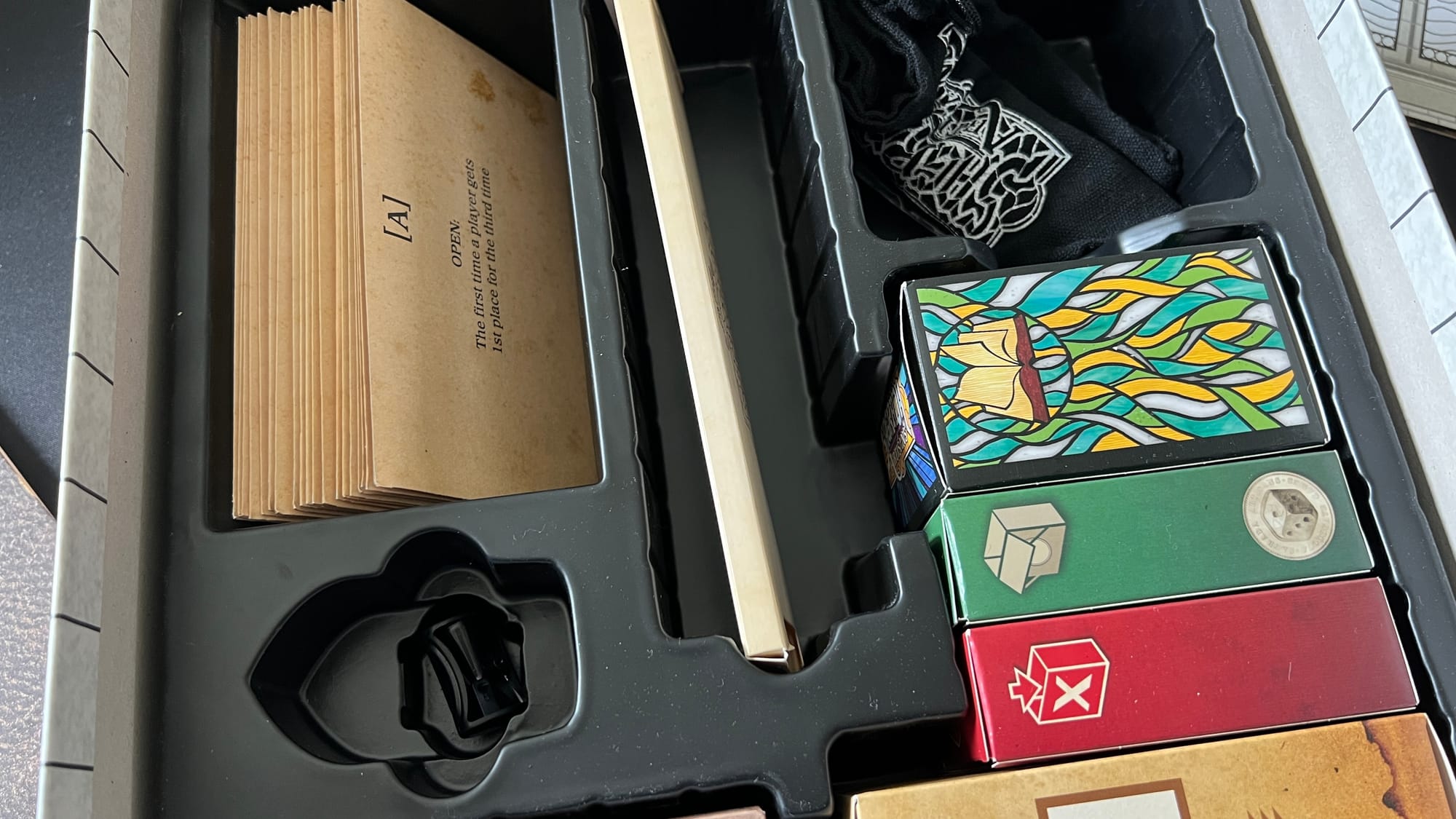
A game session starts by reading a story card that informs the players how to progress through the round. Sometimes it may include opening envelopes or taking more steps during the setup phase. In addition to the three public objectives unique to the window, each player receives a private objective card. Any unique rules for the session will be outlined before play starts, as well. The starting player will pull out and roll several dice that are then placed on a central board. The players will then choose and enter one die into their window. Values and colors are not allowed to share sides when placed on the board and some spaces have required colors or values entered on the sheet. After choosing the first die, players will take a second in reverse order. The starting player will then be rotated to the next player and progress over 12 rounds. Players will also have three communal tools to aid them in their placement at the cost of some end-of-game points. If a player ever makes a mistake or can’t place a die, they will subtract points at the end of the game.
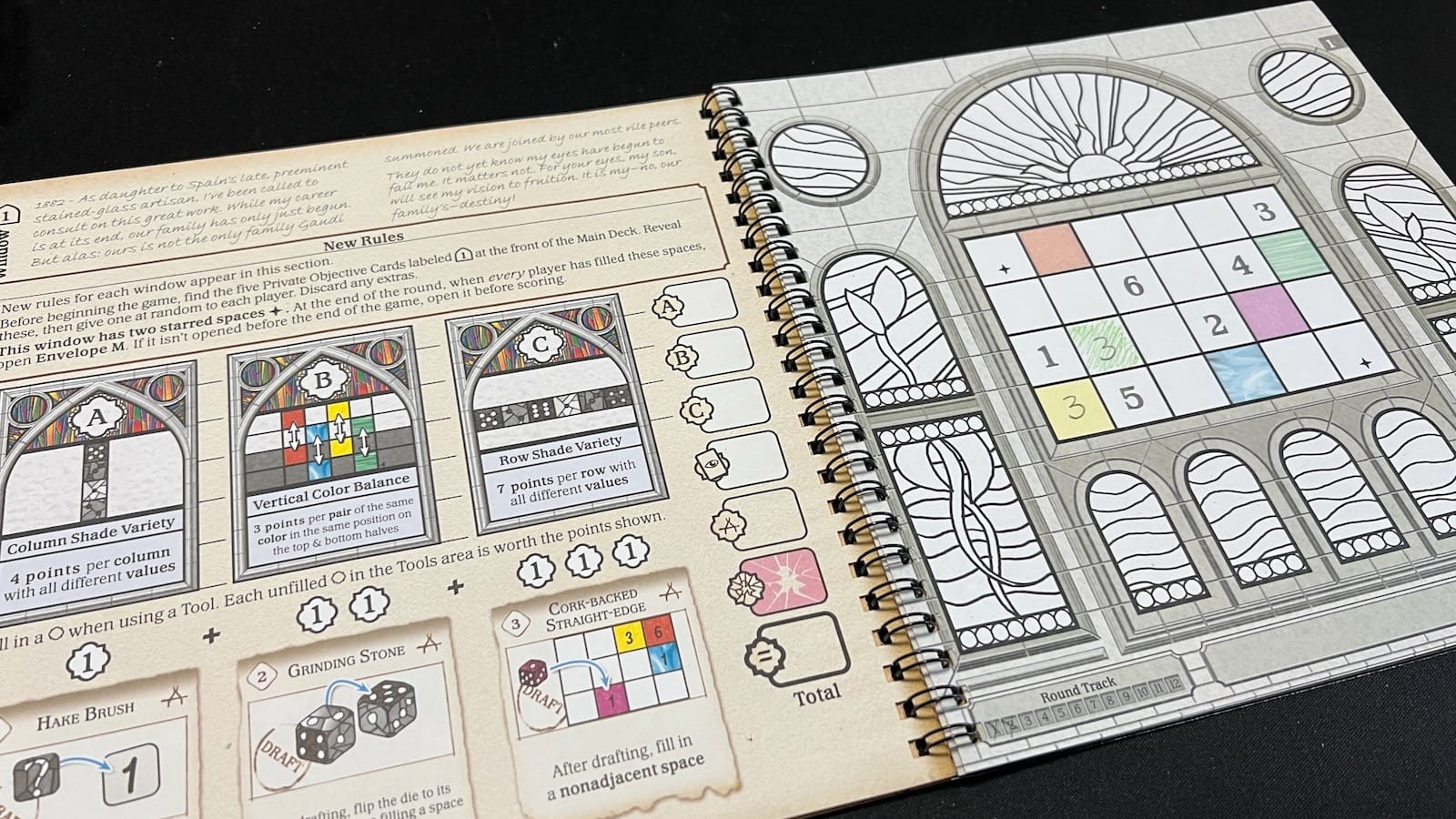
At the end of the game, players will add their scores from their objectives and any other scoring rules to determine a winner. The winner will get legacy points that can be added to their overall point total and the opportunity to sign the back of the board. Players will also get rewards based on their placement in the form of tools that can be used in future games and coins that can be spent at a market. At the market, players can upgrade their overall game by marking off spaces along three distinct tracks.
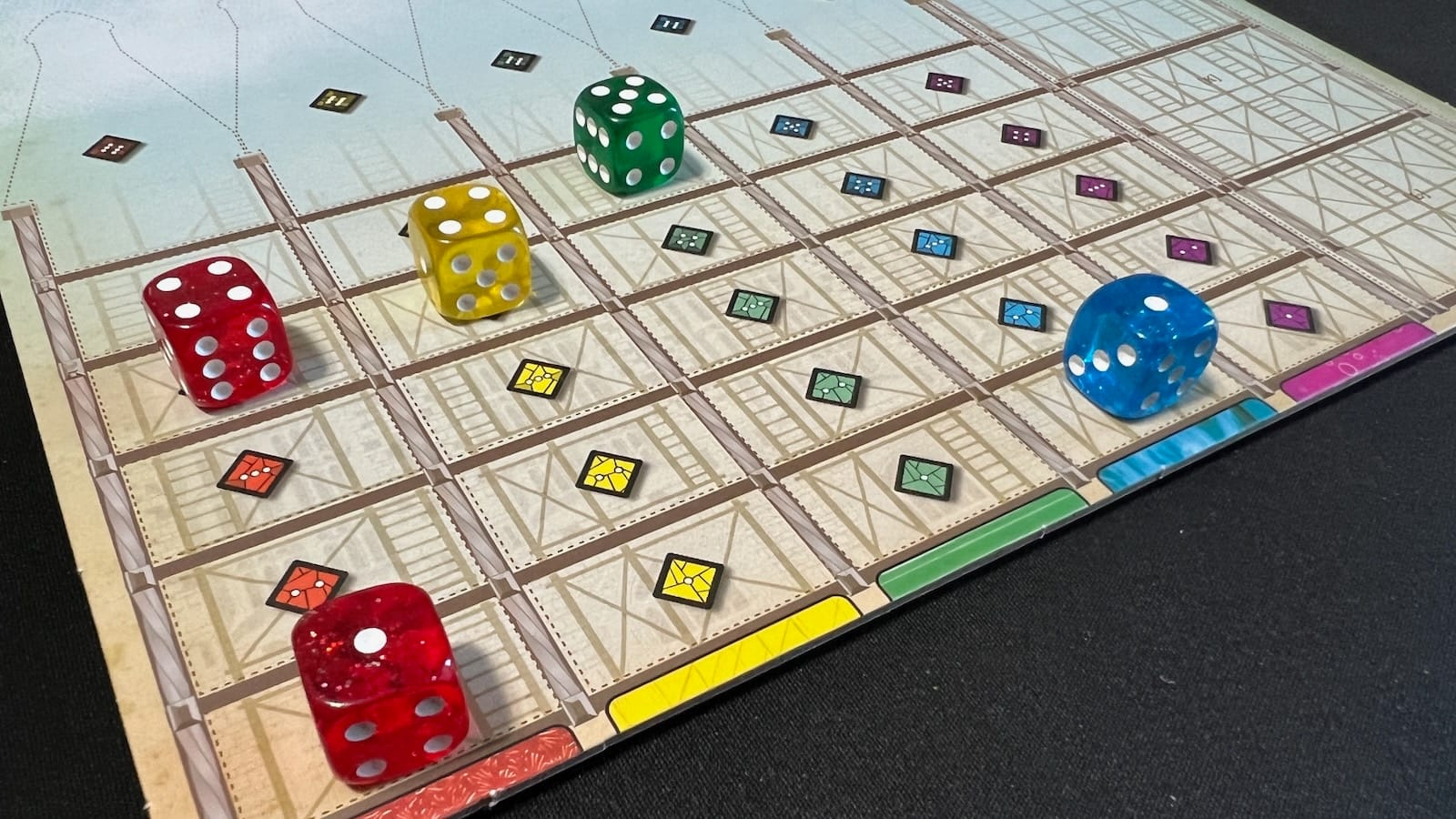
Sagrada Artisans differs from the base game of Sagrada in a few distinct ways. First, Sagrada Artisans is a legacy game, meaning that over the course of the 10 sessions, you will be making decisions that can help or hinder your progress throughout the campaign. While each individual game is scored, the overall winner is determined after the campaign is completed. As you progress, new rules will be introduced and added to the instructions via stickers. Another big difference is the smaller dice pool and the dice placement. Instead of placing dice directly on your window frame, players will draft and then use the provided colored pencils to write numbers and shade in the boxes corresponding to their chosen die. This allows a smaller number of dice needed to play the game. Players perform all scoring and drawing directly in their own individual player books. At the end of each session, rewards are handed out depending on the place you came in and the player count. Players can personalize their rewards to help their individual gameplay.
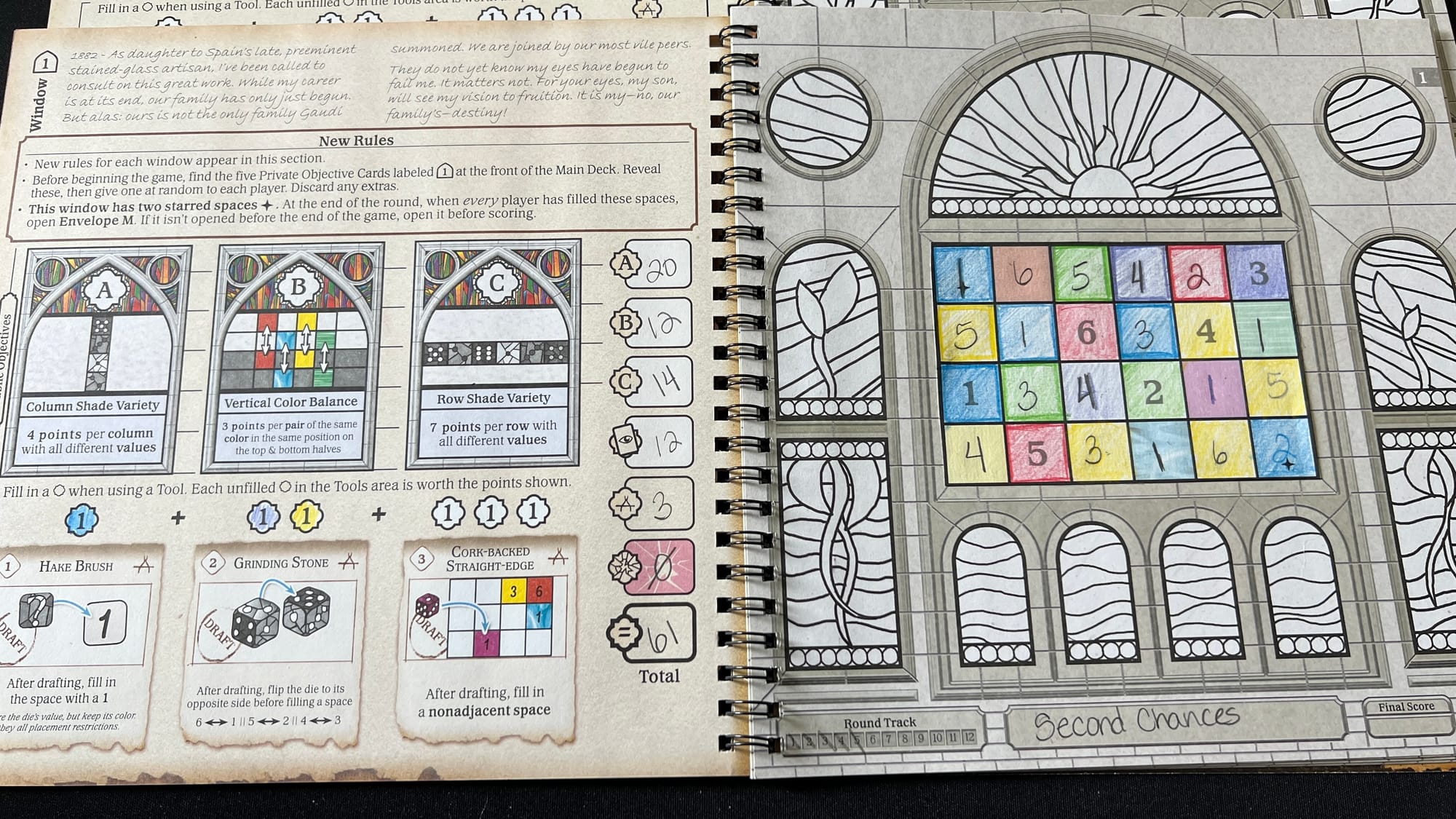
Sagrada Artisans is a great legacy implementation for fans of the base game, but could be a little overwhelming for those new to the system. Sagrada Artisans elevates and extends the simple square patterns that are offered in the base game. Players can truly personalize their books as each chapter window also serves as a coloring book for players to fill in throughout the game. The inclusion of a “first player pencil sharpener” allows players to track turns and keep their colored pencils in great condition. The artwork featured throughout the game, created by Peter Wocken, is inviting and harkens to the base game. I wasn’t impressed by the colored pencils themselves. The game asks players to write the dice value or cross out broken windows using the black pen, however;as soon as you put a base down of any color, putting another color over top doesn’t take very well. The shades of the colored pencils do not match the printed colors in the grids either, which could lead to some confusion. The printed red and purple are very different shades than the dice and pencil colors in particular. The rule set for the game is not for the faint of heart either. As more rules are added, players will have to keep track of more things as the game progresses. My mother, a big fan of the base game of Sagrada, would not necessarily be up for juggling all the added elements. That being said, the added elements, when tracked correctly, add some great flavor to those who love Sagrada. Balancing mechanics allow for players to catch up and lead to balanced scoring over the course of the campaign. As players add more tools to use in their toolbox, they can really tailor their game to confront whatever random assortment of dice came out of the bag. The inclusion of the Booster Pack allows players to take on challenges after the campaign ends, or to correct egregious errors made during the first game by providing replacement windows. The rulebook is ok, but found the included link to a video more helpful for getting off the ground in the first game. However, as the game progresses more rules may be added to the rulebook and some fun twists and turns to discover.
Sagrada Artisans
Great
Sagrada: Artisans is a great legacy implementation of an already fantastic game. I would recommend it only for fans of the Sagrada base game, but those who are, are in for a wild ride. With new takes on already sound gameplay, Artisans will take players to new creative heights.
Pros
- Great legacy twist on the original game
- Some unique added elements to enhance gameplay
Cons
- Colored pencils are poor quality
- Color differences between print and pencils
- Keeping all the rules in order can be complicated
This review is based on a retail copy provided by publisher.
